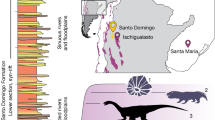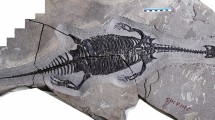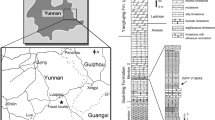Abstract
MANY previous writers have suggested that the dicynodont present in the Panchet sandstones might be Lystrosaurus. Some, such as de P. Cotter, were not concerned with a review of the dicynodont material available but had some particular stratigraphic axe to grind. Others (Lydekker, Das Gupta, von Huene) have directed attention to certain features of the few fragments available. It is probably not possible to identify Lystrosaurus on such fragments. Many characters can be matched individually with those seen in some other dicynodont. A complex of characters, and in particular the key characters of Lystrosaurus which are dependent on the relative shortness of the temporal region as compared with length and depth of snout region, can obviously only be assessed on a reasonably complete skull. The matter has been well expressed by Das Gupta1, “⃛ without the discovery of an entire skull, the zoological position of the Panchet reptile cannot be definitely settled⃛”.
This is a preview of subscription content, access via your institution
Access options
Subscribe to this journal
Receive 51 print issues and online access
$199.00 per year
only $3.90 per issue
Buy this article
- Purchase on SpringerLink
- Instant access to full article PDF
Prices may be subject to local taxes which are calculated during checkout
Similar content being viewed by others
References
Das Gupta, H. C., J. and Proc. Asiatic Soc., Bengal, 15 (1919); 24 (1928).
Author information
Authors and Affiliations
Rights and permissions
About this article
Cite this article
ROBINSON, P. Fossil Reptiles from the Panchet Beds of India. Nature 183, 913 (1959). https://doi.org/10.1038/183913a0
Issue date:
DOI: https://doi.org/10.1038/183913a0



